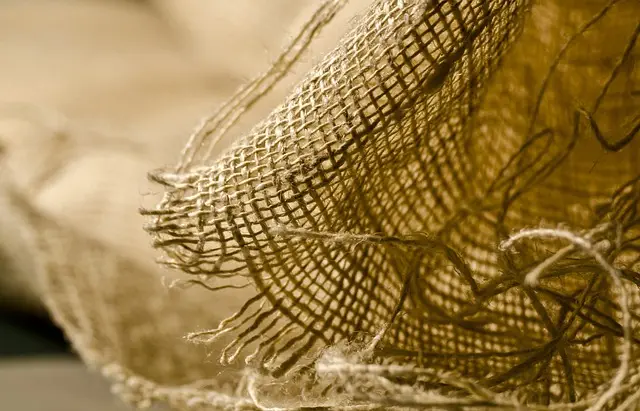Muscle soreness, particularly delayed-onset muscle soreness (DOMS), is a common result of intense physical activity, ranging from mild to severe discomfort due to microtrauma, inflammation, and metabolic waste accumulation post-exercise. The lotus flower dried extract has emerged as a natural remedy for this condition, thanks to its alkaloid content that may offer pain relief through anti-inflammatory and analgesic properties, which could potentially inhibit specific enzymes and pathways in the body's inflammatory response. This extract is traditionally used in Thai and Malaysian herbal medicine and is supported by contemporary scientific research for its efficacy in alleviating muscle soreness. Additionally, kratom from the same botanical family (Rubiaceae) has gained attention for its analgesic properties, with certain strains like Maeng Da and Bali known for their pain-relieving effects. The combination of lotus flower dried leaves with kratom may enhance analgesia by influencing neurotransmitter systems such as serotonin and norepinephrine. It is crucial to consult healthcare professionals before using these natural alternatives, as responses can vary widely and there are important considerations regarding responsible use, legal status, and safety precautions to ensure optimal benefits and avoid adverse effects. Users should also engage in self-monitoring for the best outcomes in managing muscle soreness.
Muscle soreness can be a persistent nuisance, whether it’s from intense exercise or daily physical activities. Seeking effective relief without resorting to conventional pain medication is a priority for many. This article explores the potential of kratom, particularly the lotus flower dried leaves, in providing natural muscle soreness relief. Delve into the origins and understanding of muscle soreness, followed by the natural analgesic properties of kratom. We will also guide you through selecting the right strains for muscle comfort and discuss necessary precautions to ensure safe use. Join us as we examine how this botanical remedy could be your ally in managing discomfort.
- Understanding Muscle Soreness and Its Root Causes
- The Role of Lotus Flower Dried Leaves in Natural Pain Relief
- Effective Kratom Strains for Muscle Soreness Alleviation and Precautions to Consider
Understanding Muscle Soreness and Its Root Causes

Muscle soreness, a common experience for many individuals, can range from mild discomfort to severe pain affecting one’s daily activities. This phenomenon, often referred to as delayed-onset muscle soreness (DOMS), typically occurs following intense or unaccustomed physical activity. The mechanism behind muscle soreness is multifactorial, involving microtrauma to muscle fibers, inflammation, and the metabolic byproducts of exercise. Understanding the root causes of muscle soreness is crucial for effective management and relief, which is where natural remedies like the lotus flower dried extract come into play. The lotus flower, revered in many cultures for its medicinal properties, contains alkaloids that may help manage pain and inflammation. Its anti-inflammatory and analgesic effects are believed to work by inhibiting certain enzymes and pathways involved in the inflammatory response, potentially offering relief from muscle soreness associated with strenuous activity or overuse injuries. Regular use of dried lotus flower extract may contribute to a reduction in muscle pain, promoting recovery and enabling individuals to maintain their fitness routines without the hindrance of persistent soreness.
The Role of Lotus Flower Dried Leaves in Natural Pain Relief

The lotus flower, revered in many cultures for its symbolism and beauty, also offers significant benefits in the realm of natural pain relief through its dried leaves. Traditionally used in herbal medicine, the alkaloids present in the lotus flower dried leaves, such as 7-hydroxymitragynine, are believed to contribute to analgesic properties that can soothe muscle soreness. These compounds interact with opioid receptors in the brain and spinal cord, potentially offering a natural alternative for pain management. The use of these dried leaves has been a part of traditional Thai and Malaysian remedies for centuries, underscored by modern research that continues to validate their efficacy.
Kratom, another plant from the same family (Rubiaceae), has gained attention for its pain-relieving effects as well. When combined with lotus flower dried leaves, some users report an enhanced analgesic effect due to the synergistic action of their active constituents. This combination is thought to modulate neurotransmitter systems, such as serotonin and norepinephrine, which can further contribute to pain relief. As a natural alternative to synthetic painkillers, the combination of kratom and lotus flower dried leaves represents a promising avenue for those seeking plant-based solutions for muscle soreness relief. Users are encouraged to consult with healthcare professionals before incorporating these natural remedies into their health regimen, especially considering individual differences in response to such compounds.
Effective Kratom Strains for Muscle Soreness Alleviation and Precautions to Consider

When exploring natural remedies for muscle soreness, kratom, a plant from the coffee family, has garnered attention due to its potential analgesic properties. Among the many strains of kratom available, certain ones are reported to be particularly effective in alleviating muscle discomfort. The lotus flower dried leaves, often associated with kratom, are revered for their healing attributes and have been used traditionally in various cultures. Strains such as Maeng Da and Bali are frequently cited for their strong pain-relieving effects. Maeng Da, known for its balanced alkaloid profile, is said to offer significant relief from muscle soreness without the sedative side effects that can accompany other pain management methods. Bali kratom, on the other hand, is renowned for its potent analgesic properties and is often preferred by individuals seeking relief from persistent muscle aches.
While kratom may provide relief for muscle soreness, it is crucial to approach its use with caution. The appropriate strain, dosage, and preparation are key factors in maximizing its benefits while minimizing potential adverse effects. Users should start with a low dose to gauge their individual response before gradually increasing if necessary. It’s also important to be aware of the legal status of kratom in one’s jurisdiction, as it varies across different regions and can change over time. Additionally, those with pre-existing health conditions or taking other medications should consult with a healthcare provider before incorporating kratom into their wellness regimen. Precautions such as avoiding combination with alcohol or other substances that can exacerbate side effects are essential for safe use. Regular monitoring of one’s physical and mental health responses to kratom is also recommended to ensure its safe and effective use for muscle soreness relief.
Muscle soreness can be a significant hindrance to one’s daily activities and overall well-being. Understanding its origins is crucial for effective management. The article explored this topic extensively, highlighting the natural pain relief properties of lotus flower dried leaves, commonly known as kratom. Specifically, certain strains of kratom have been identified for their potential to alleviate muscle discomfort. While kratom may serve as a viable alternative for some individuals, it is imperative to approach its use with caution, adhering to recommended dosages and consulting healthcare professionals when necessary. As a natural supplement, lotus flower dried leaves offer a promising avenue for those seeking relief from muscle soreness without relying solely on traditional pharmaceuticals. Prospective users should consider the balancing act between harnessing kratom’s benefits and maintaining safety to optimize their health outcomes.






